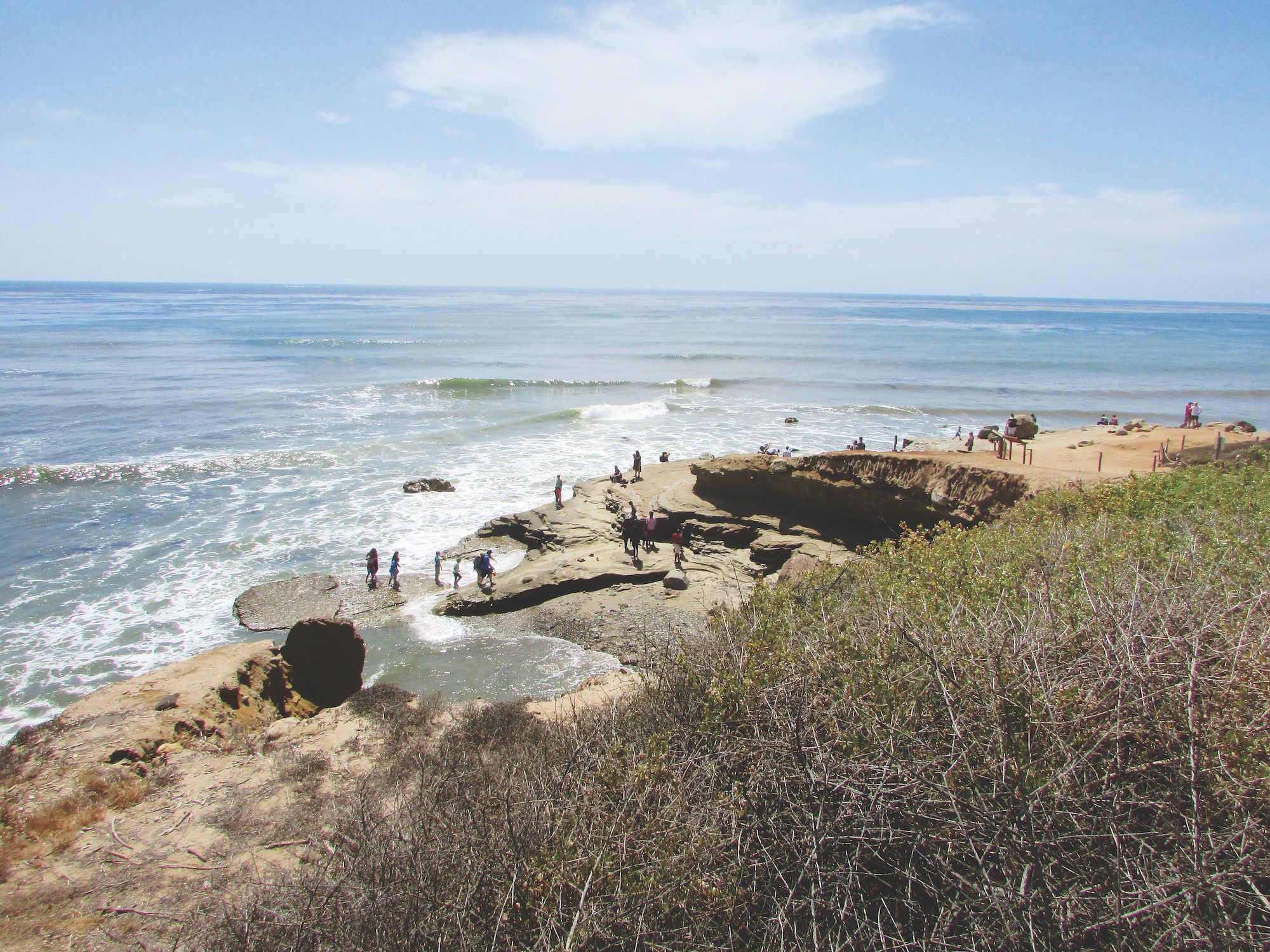In Pursuit of Wildness: Cabrillo National Monument

The Pacific Ocean is jaw-droppingly beautiful as I ride my motorcycle along Highway 1 from Monterey, CA, toward San Diego. It’s easy to allow your imagination to run free along each curve on this scenic highway, envisioning sailing ships exploring new lands. Albert Einstein said that “imagination is more important than knowledge.” I think that to be an explorer, imagination and knowledge are equally important.
This story begins in 1542 in a place called San Miguel. It is one of the most beautiful cities in America. Today it is called San Diego. Juan Rodríguez Cabrillo, a navigator sailing under the flag of Spain, landed his ship at San Diego Bay on September 28, 1542, becoming the first European to set foot on what is now the West Coast of the United States. Cabrillo National Monument is where this story takes place.
Today is the last day of school and I ask our grandkids, Evan, 11, and Malia, 8, “Do you want a history lesson?” Both are puzzled by my question just after the school year has ended. “Do you know that San Diego was once called San Miguel?”
Evan, replies quickly. “Yea, we studied about Cabrillo in 4th grade. Another Spanish explorer, Sebastián Vizcaíno, sailed here 60 years later and renamed it San Diego,” he says. “Is that where the tide pools are?” Malia asks. Both without hesitation want to see the tide pools, so off we go to Cabrillo National Monument.

We all seem to forget about time as the tides control the rhythm of life along the ocean’s shore. We peer into tide pools looking for marine plants and animals such as sea anemones, sea urchins, shore crabs, and bat stars. Evan and Malia love watching the isopods scurrying on the seaside cliffs. In January and February, you can see gray whales traveling toward Mexico. There are always sailboats and larger ships on the horizon, and soon I’m lost in the magic of the ocean, thinking about Cabrillo and what he saw. We stop by the National Park Service’s “hands-on” exhibit, where we are encouraged to pick up the seashells, the whale baleen, and the other animals and fish that come from the ocean.
In the distance, we see the Old Point Loma Lighthouse, and an easygoing trail takes us up to the historic site. Looking back, San Diego Bay is so photogenic it’s hard not to get a great picture. A large statue of Cabrillo frames this awesome view. We walk along the scenic 2.5-mile round-trip Bayside Trail that descends about 300 feet through the native coastal sage scrub. If you go, take a bottle of water and enjoy the views of San Diego Bay.
I think that Cabrillo may have preferred the name San Miguel, but he surely would be honored to know that Cabrillo National Monument was established to commemorate his life and exploration.
“Man cannot discover new oceans unless he has the courage to lose sight of the shore.”— André Gide

Planning a Visit
Cabrillo National Monument, established in 1913, is located within the city of San Diego, which has generally sunny and mild weather year-round. The site offers a superb view of San Diego’s harbor and skyline. The southern end of Cabrillo is one of the best-protected and easily accessible rocky intertidal areas in Southern California.
The site is close to a number of local attractions, including SeaWorld San Diego, San Diego Zoo, Sunset Cliffs Natural Park, San Diego Natural History Museum, Old Town San Diego State Historic Park, Fort Rosecrans National Cemetery, and the Fleet Science Center.
To Do
Within Cabrillo National Monument there are excellent opportunities to explore the natural and cultural history of the area: ranger-led activities, Junior Ranger activities, a visitors center, Old Point Loma Lighthouse, a self-guided 2-mile walk, tide pools, birding, and gray whale watching (viewing is best in January and February).
One of my favorite motorcycle rides when visiting San Diego is east on Interstate 8 toward Alpine, then north on State Route 79 toward Mount Laguna, located at almost 6,000 feet in a forest of Jeffrey pine, returning west on CA 78, and stopping for some delicious apple pie in Julian. This is an easy day ride, about 130 miles in the beautiful Cuyamaca Mountains. Another great ride is to Anza-Borrego Desert State Park, a 180-mile round-trip.
Hours
Cabrillo National Monument is open every day of the year, from 9 a.m. to 5 p.m. The main gate closes at 5 p.m., and public access after 5 p.m. and before 9 a.m. is not allowed (that includes walking, jogging, biking, or any type of entry).
Fees
Entrance fees, good for seven days, are $15 per motorcycle, $20 for a noncommercial vehicle, and $10 per walker or bicyclist. An annual pass is $35.
